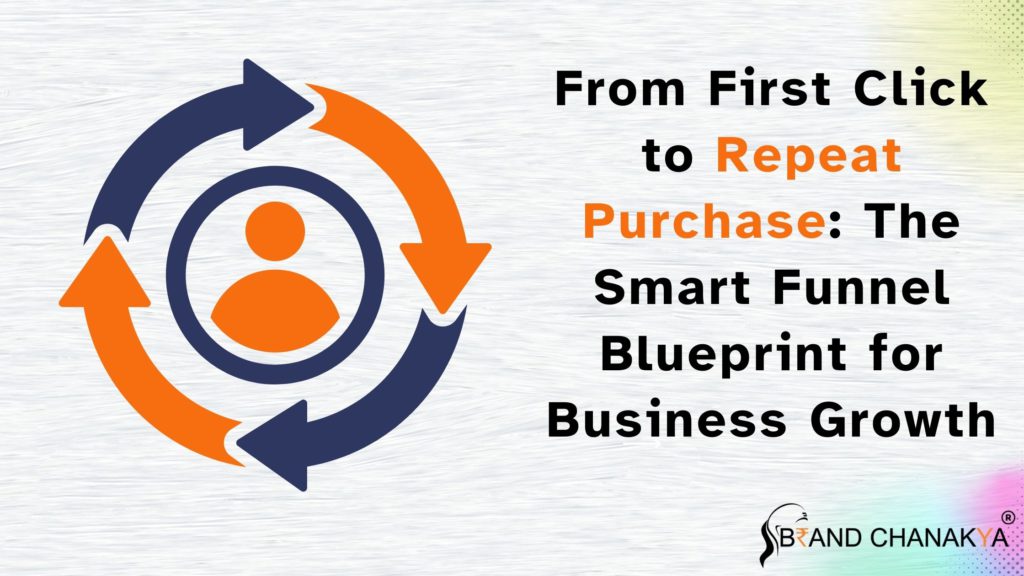Many businesses focus heavily on generating traffic — running ads, creating social media buzz, and posting blogs — but fail to convert those visitors into loyal customers. The real growth happens not when someone clicks once, but when they buy repeatedly and become brand advocates.
That’s where a smart sales funnel comes in.
A well-structured customer journey funnel ensures that every click leads to a carefully crafted experience — from awareness to trust, from first purchase to repeat buying. This blog will walk you through a blueprint that uses SEO, performance marketing, content marketing, and automation to guide customers seamlessly through every stage of your funnel.
Understanding the Sales Funnel Stages
A sales funnel is more than a fancy marketing term — it’s the step-by-step journey that turns strangers into repeat buyers. Here’s the breakdown:
- Stranger – They don’t know you exist.
- Aware – They discover your brand through SEO, ads, or social media.
- Interested – They consume your content and show curiosity.
- Trusting – They believe your brand can deliver value.
- Buying – They make their first purchase.
- Repeating – They come back for more and refer others.
The key insight? Each stage needs different marketing efforts. You can’t use the same approach for someone who’s never heard of you and someone who’s ready to buy again.
Top-of-Funnel (ToFu): First Click & Awareness
This is where you attract strangers and turn them into aware prospects.
SEO for Lead Generation
- Target keywords your audience is searching for (use Google Keyword Planner or SEMrush).
- Publish educational, value-driven blogs that solve problems, not just sell products.
- Optimize technical SEO — site speed, mobile-friendliness, meta tags — so search engines rank you higher.
- Example: A Udaipur-based interior design firm ranking for “best interior design ideas for small homes.”
Performance Marketing Strategies
- Use Google Ads for high-intent search terms.
- Run Meta Ads (Facebook & Instagram) for visually engaging awareness campaigns.
- Segment audiences by demographics, interests, and behaviors for precise targeting.
Content Marketing for Awareness
- Create YouTube videos, Instagram Reels, and infographics to educate and inspire.
- Offer lead magnets like free guides, checklists, or webinars to collect emails early.
Middle-of-Funnel (MoFu): Interest & Trust-Building
Once they know you, the goal is to build trust and connection before asking for the sale.
Email Marketing
- Use drip campaigns to nurture leads with tips, industry insights, and case studies.
- Share educational content, not just promotions.
Retargeting Ads
- Serve ads to people who visited your site but didn’t convert.
- Example: An online clothing store showing carousel ads of products a visitor viewed.
Case Studies & Testimonials
- Social proof is powerful — showcase real customer stories and results.
Landing Pages & Lead Magnets
- Create targeted landing pages for each campaign.
- Offer something valuable in exchange for contact details — eBooks, free trials, templates.
Bottom-of-Funnel (BoFu): Conversions & Repeat Purchases
This is where interest turns into revenue — and where many businesses stop. But a repeat customer strategy is just as important as the first sale.
Performance Marketing – Conversion Campaigns
- Use strong CTAs like “Buy Now & Save 20%” or “Limited Stock – Order Today.”
- Offer urgency triggers such as countdown timers and limited-time discounts.
- Optimize your checkout process — fewer steps mean fewer drop-offs.
Automation & CRM
- Tools like HubSpot, Mailchimp, or ActiveCampaign send abandoned cart reminders.
- Automate product recommendations based on past purchases.
Loyalty & Retention Programs
- Offer points, discounts, or exclusive perks for repeat purchases.
- Send post-purchase surveys to gather feedback and improve.
Analyzing and Optimizing the Funnel
Your funnel is only as good as the data you measure.
Track Key Metrics:
- CTR (Click-Through Rate) – How many people click after seeing your content/ads.
- Conversion Rate – The percentage of visitors who take your desired action.
- ROAS (Return on Ad Spend) – Revenue generated per ad dollar spent.
- LTV (Lifetime Value) – The total revenue from a single customer over time.
Tools to Use:
- Google Analytics – For overall site performance.
- Meta Ads Manager – For social ad tracking.
- Hotjar – To see how users interact with your site.
- SEMrush – For SEO performance insights.
A/B Testing:
- Test headlines, images, CTAs, and landing page layouts at each funnel stage.
Conclusion
Building a smart sales funnel isn’t about throwing ads at people and hoping they buy. It’s about creating a guided customer journey — from the first click to becoming a loyal, repeat buyer.
By combining SEO for organic reach, performance marketing for quick wins, content marketing for trust-building, and automation for retention, you can maximize both your conversions and customer lifetime value.
Want to build a conversion-ready funnel tailored to your business? Let Brand Chanakya design your funnel blueprint so you can turn more clicks into lifelong customers.
Follow us on Instagram:- @brand_chanakya

